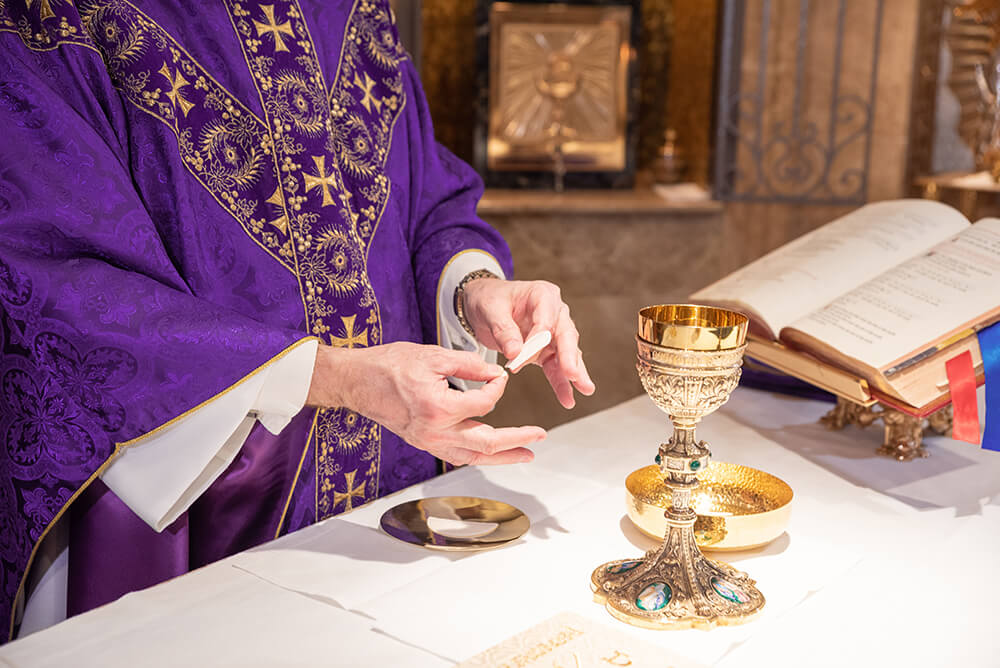This means “Lamb of God”
Today’s Lenten Lesson: The Agnus Dei
Most of what is in the Mass can be found in the Bible.
It’s true, almost every word in the Mass can be traced back to the Bible – like the “Lamb of God” prayer right before Holy Communion. In Latin we call it the “Agnus Dei” and it calls to mind that electric moment when John the Baptist pointed to Jesus at the Jordan and exclaimed, “Behold the Lamb of God!” (cf. John 1:37). Immediately John and Andrew began to follow Jesus who, turning around, surprised them by asking, “What are you looking for?”
Indeed, what are you looking for?
“Lamb of God” may sound a bit strange to us in contemporary English, but back then – to that audience and in that language – it had a profound meaning and triggered a reflection on Abraham’s sacrifice of Isaac and God’s promise to save His people.
When Isaac asked his father, “Where is the sacrificial animal?” Abraham replied that “God himself will provide the sacrifice.” And so He did, thousands of years later in the person of Jesus.
Jesus is the “sacrificial lamb” who takes away the sins of the world, fulfilling the prophetic meaning of the sacrifice of Abraham and the Passover event which set the Israelites free from bondage in Egypt.
We say, “Lamb of God who takes away the sins of the world, have mercy on us … grant us peace” because that is what the heart and soul seek: peace and repose from all worry, and anxiety, and remorse for our own sinfulness.
It is a beautiful way for us to prepare for the moment of Holy Communion.
If you have missed a previous Lenten Lesson or bonus video on the Mass, you can find all of them here. Or subscribe to receive these Lenten Lessons in your inbox each morning.


